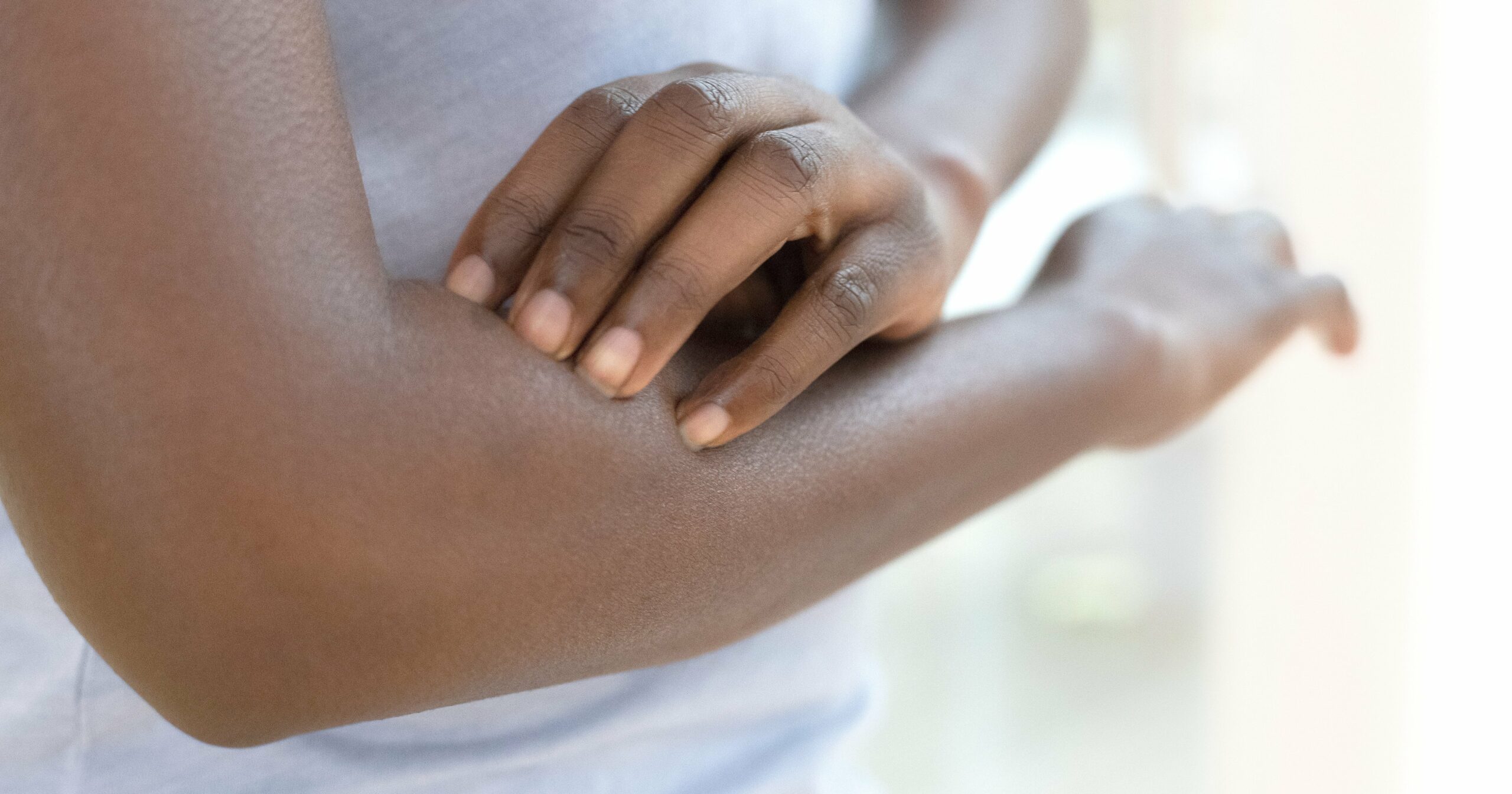As if the mental toll of stress wasn’t enough, it can also manifest in a multitude of physical symptoms – from hair loss to acne. And one often-overlooked way anxiety can manifest is in stress hives, itchy red welts that pop up during times of tension.
An estimated 20 percent of the population will find themselves with hives – also known as urticaria – at some point in their lives, with women experiencing this skin irritation at a higher rate. And while there are no reliable figures on the prevalence of stress hives, specifically, the link between your mental state and your skin is well-established, and experts say stress hives are relatively common.
The good news is that doctors say stress hives tend to come and go quickly, so the best thing you can do is try to stay calm and know that the episode will pass. But there are some steps you can take to speed up your recovery and reduce your overall stress so that, hopefully, the hives don’t make a comeback.
Experts Featured in This Article
Kristina Collins, MD, is a board-certified dermatologist based in Austin, TX.
Mirela Loftus, MD, PhD, is a mental health specialist and the medical director for Newport Healthcare in Connecticut.
What Are Stress Hives?
“[Stress hives] often appear as red, swollen, irregular patches that vary in size and shape. They can feel itchy or uncomfortable, sometimes even burning or stinging. The welts may also merge into larger patches on the skin,” says dermatologist Kristina Collins, MD. While stress hives can pop up anywhere, they’re most commonly seen on the face, neck, chest, and arms.
Why Does Stress Cause Hives?
You may be wondering why your body thinks red bumps should be the answer to an already stressful situation. “Stress can trigger the body’s immune response, causing the release of histamine and other chemicals from mast cells [white blood cells] in the skin,” Dr. Collins says. “These substances increase blood flow and make small blood vessels leaky, resulting in fluid accumulation and swelling (edema) in the skin layers, which form hives.” Those with more sensitive immune systems – such as people with allergies, asthma, or atopic dermatitis – may be more susceptible to stress hives, Dr. Collins says. So is anyone who’s had allergic hives before. But no one is immune, Dr. Collins adds.
Worth noting: the terms “stress hives” and “stress rash” are often used interchangeably. Technically, hives are a type of rash, per the Cleveland Clinic. So any skin irritation caused by stress could be called a stress rash, and sometimes that rash is made up of hives, according to Healthline.
How to Get Rid of Stress Hives
While some forms of hives, like chronic spontaneous urticaria, can persist for days or even years, stress hives aren’t known for hanging around for a long time. “They typically can ease on their own and fairly quickly, within 24 hours,” says Laura Purdy, MD. During that time, you can ice the irritated area or apply topical cortisone to reduce inflammation.
If your symptoms persist for longer than 24 hours (or start to get worse), it’s time to contact your physician. “Someone should see their doctor about stress hives if they last a long time, are severe (itching), impact daily life, and if there are other accompanying symptoms of fever, or joint pain,” says Mirela Loftus, MD, PhD. In this case, your doctor may prescribe you a treatment such as orticosteroids, a steroid used to reduce inflammation in the body.
How to Prevent Hives and Skin Rashes From Stress
No one can live a totally stress-free life, but if you’re prone to stress hives, finding ways to control your stress mental state and mood can help prevent flare-ups. “Managing stress through techniques like mindfulness, exercise, or counseling can reduce the likelihood of stress hives,” says Dr. Collins. She also recommends keeping a diary or log to track your triggers and symptoms. “This may help identify patterns and prevent future outbreaks,” she says.
Seeing a therapist may also help you work through your daily stressors and develop coping mechanisms for all the hurdles life throws your way. “Anyone can experience stress hives if exposed to high stress levels or under intense stress,” Dr. Loftus says. So, if you spot those red welts, make sure to consider both your physical and mental health as you treat them.
Kells McPhillips is a health and wellness writer living in Los Angeles. In addition to PS, her journalism has appeared in The New York Times, Well+Good, Fortune, Runner’s World, Outside, Yoga Journal, and others. On the brand side, she regularly works with Peloton, Calm, and Equinox.




